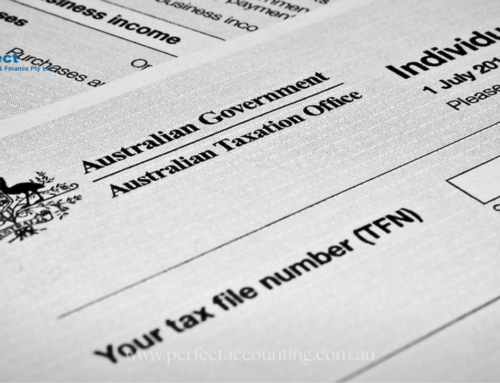When it comes to paying taxes, most of us feel like we’re navigating a maze. But don’t worry—whether you’re an employee checking your payslip or a small business managing payroll, understanding the fortnightly tax table can actually be pretty straightforward.
In this guide, we’ll break it down using plain English, practical examples, and a real-life story or two. We’ll also introduce you to a trusted partner—Perfect Accounting PTY Ltd—that can take the stress out of payroll and taxation for good.
What is a Fortnightly Tax Table?
In simple terms, the fortnightly tax table is a chart published by the Australian Taxation Office (ATO). It helps employers work out how much income tax to withhold from an employee’s fortnightly earnings—that is, if they’re paid every two weeks.
It’s part of a broader set of tax tables designed to match different pay cycles: weekly, fortnightly, monthly, or annually. The fortnightly table specifically applies when your employees get paid every two weeks (which is very common in Australia).
Why You Should Care
If you’re an employee, understanding this helps you know whether you’re being taxed correctly. If you’re an employer, it ensures you’re meeting your legal obligations and avoiding future penalties.
Let’s consider a quick story:
Meet Sam, a café owner in Melbourne. Sam was using outdated tax rates to pay his staff fortnightly. As a result, he underpaid the tax on his employees’ wages and had to deal with a surprise tax bill and an ATO audit. After switching to updated fortnightly tax tables and getting help from Perfect Accounting PTY Ltd, he now handles payroll stress-free—and his employees are happier too!
How Does the Fortnightly Tax Table Work?
Here’s a step-by-step breakdown:
Step 1: Identify Gross Fortnightly Earnings
This is the total amount your employee earns before any deductions (like tax or superannuation).
Step 2: Find the Right Tax Table
You can get the official fortnightly tax tables from the ATO website. These tables are updated annually, usually from July 1.
Step 3: Match the Earnings to the Table
Locate the earnings bracket that your employee falls into and check the corresponding withholding tax amount.
Step 4: Apply Any Relevant Tax Offsets
Some employees may be eligible for things like the low and middle income tax offset (LMITO) or tax-free threshold. This will reduce how much you need to withhold.
Step 5: Withhold and Pay
Deduct the correct amount from the employee’s pay and forward it to the ATO.
Common Terms You’ll See (And What They Mean)
-
Gross pay – Total earnings before tax.
-
PAYG withholding – “Pay As You Go” tax withheld from wages.
-
Tax-free threshold – First $18,200 of income that isn’t taxed.
-
Medicare levy – A standard 2% deduction for Medicare, unless exempt.
-
HECS/HELP – Additional withholding for student loan repayments.
You can learn more about these from the ATO’s guide to PAYG.
Benefits of Using the Correct Tax Table
✅ Compliance with ATO regulations
✅ Peace of mind—no unexpected tax bills
✅ Accurate employee payslips
✅ Professional appearance of your business
Imagine not having to second-guess every pay run. Imagine your staff trusting that their deductions are right. That’s the power of getting it right the first time.
Mistakes to Avoid
-
Using last year’s tax table
-
Ignoring changes in employee status (e.g., claiming/not claiming the tax-free threshold)
-
Not updating payroll software
-
Not checking for HECS/HELP debts
Want to Save Time? Let the Experts Handle It
While it’s great to understand the basics, many small business owners would rather focus on running their business than managing tax compliance.
That’s where Perfect Accounting PTY Ltd comes in.
Why Choose Perfect Accounting?
-
✅ Registered Accounting Agents
-
✅ Decades of experience with payroll and tax services
-
✅ Personalised attention for each client
-
✅ Affordable pricing
-
✅ Experts in ATO compliance and reporting
Whether you’re a startup, a café, a tradie, or a corporate firm, they’ll tailor their service to your needs—and they use ATO-compliant software that always stays up to date.
“Perfect Accounting PTY Ltd helped me fix years of tax confusion. Now my staff are paid correctly, and I can sleep at night.” – Rachel M., Small Business Owner
Conclusion
Understanding the fortnightly tax table isn’t just for accountants or payroll managers—it’s for anyone who gets paid, pays staff, or wants to avoid a tax disaster.
To wrap up:
-
The tax table is updated annually by the ATO.
-
It helps calculate PAYG withholding for fortnightly wages.
-
Getting it right protects both employers and employees.
-
If it feels too complex, don’t sweat it—call in the experts.
Ready to make tax time stress-free?
Contact Perfect Accounting PTY Ltd today and let the pros handle it. Their friendly team is just a click away—and your payroll problems will be a thing of the past.







